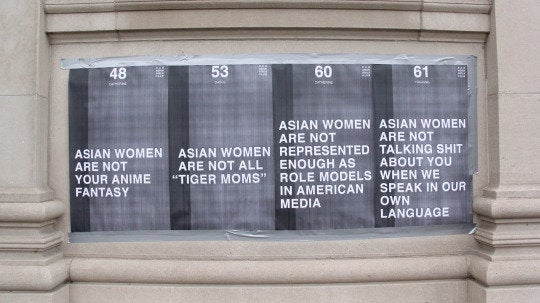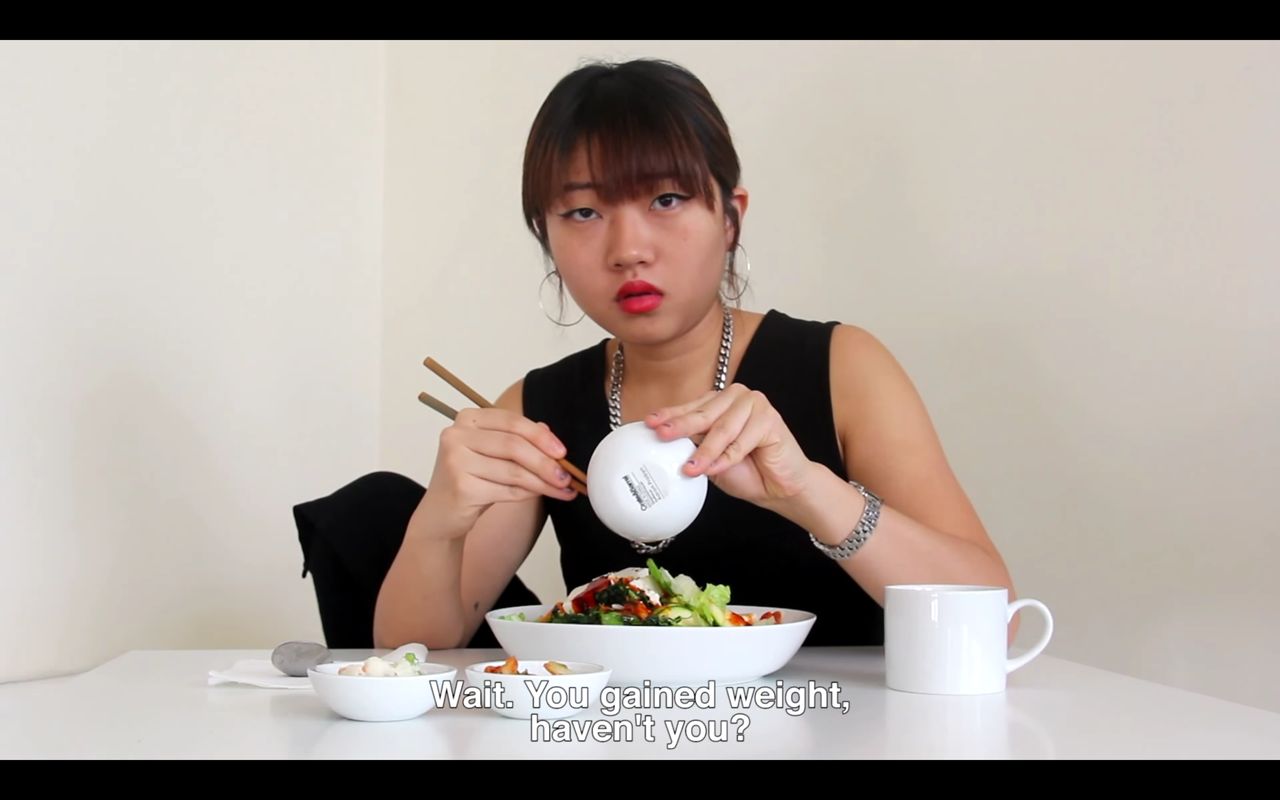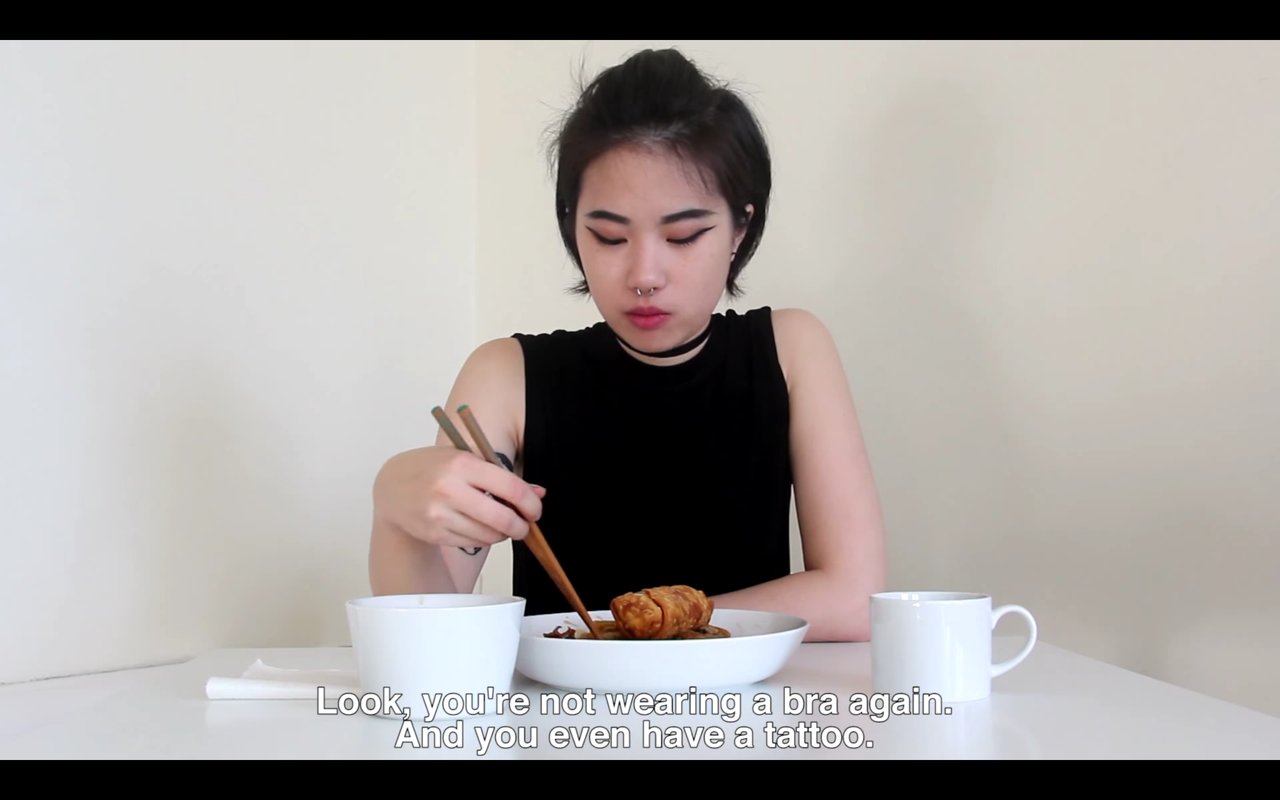When you think of an Asian woman, what comes to mind? A tiger mom? An anime fantasy? A manicurist talking about you in another language? For Asian women, these stereotypes are frustrating, disheartening and downright depressing.
Instead of letting those feelings fester and rot internally, Rhode Island School of Design students Olivia Park and Esther Fan decided to do something constructive. Late last year, they started Sad Asian Girls Club, a collective of Asian-American girls aiming to break the culture of passiveness and silence through discussions of racism and feminism, providing more representation for Asian girls of all types and backgrounds around the world.

While technically the collective consists of just Fan and Park, Sad Asian Girls Club has evolved into a community in the most modern sense of the word -- a stark red, black and white-tinted place they’ve carved out online on Tumblr, Instagram and YouTube. The Internet is where you can find vitriol and hate in abundance, but it’s also where you can find empathy and solidarity from people who've had the same experiences as you.
So who is the “Sad Asian Girl"? According to Fan, “She’s any Asian individual identifying as female who is struggling to fit into some kind of mold perpetrated by both Western society and Asian society. There are different expectations from both sides that we constantly have to choose between or just be isolated by both.”
Their first project, a video titled “Have You Eaten,” is directed at Asian-American women who have immigrant parents. In it, Park and Fan sit at a table while an off-screen voice, presumably their mothers’, criticizes everything from their weight to their piercings to their sexuality as the girls eat their food in silence. While they don’t say anything themselves in the video, the artists are speaking volumes by presenting this tragic domestic scene for us to see.
In the collective’s second piece of work, they asked Asian women to finish this sentence: “All asian women are not ____.” They received hundreds of submissions, but decided to present 100 statements that seemed to consistently come up. The statements succinctly touch upon the fetishization of Asian women, the model minority myth, the token sidekick and myriad other stereotypes that Asians face.

“That project is more directed toward a non-Asian audience, so people can be aware that these microagressions exist, and compiling them in a public space helps people realize how hurtful they can be when you see them from our perspective,” said Park.
While their own parents don’t fully understand nor approve of their work, Park and Fan said that they have been surprised at the positive response they’ve received. “We always underestimate how much we’re reaching people,” said Fan. “But we have received some criticism that we didn’t include South Asian women in our first two projects, which we took to heart and are really considering in our work.”
As articulate and savvy as the two artists are, it’s easy to forget that they are still just juniors in college. Expecting SAGC to represent the full Asian-American, female experience in the club’s short existence, well, that's a heavy burden for them. Yet, Fan and Park's sincerity and earnestness in attempting to represent as many perspectives and stories hews admirable, even inspiring.
“With any publicized work comes great experience and great responsibility. Because of that, our work will only become stronger through criticism,” said Park.
SAGC has also had people question the choice of “sad” in their name, but the word is an important and intentional one. “Being sad is a taboo, as if it should be something you hide and deal with yourself, but we should be able to present ourselves in a very obvious way in order to strike any meaningful conversation. So we embrace being the sad, oppressed group in order to empower people and make them pay attention,” said Park.
“The point is we’re talking about it and not just wallowing in our sorrow,” added Fan.
“The misconception about feminism that it’s just about women becomes a problem, because people of different racial backgrounds have different experiences. It’s important to recognize that to move forward as a feminist movement or as an individual.”
While feminism has been having “a moment” in pop culture for the past few years, Asian-American women have consistently been left out of that conversation. For that reason, SAGC feels like a fresh and direly needed perspective.
“We focus on the intersectionality of race and gender,” said Park. “These issues are not separate, and they should be discussed together. The misconception about feminism that it’s just about women becomes a problem, because people of different racial backgrounds have different experiences. It’s important to recognize that to move forward as a feminist movement or as an individual.”

The SAGC collective stems from feelings of being excluded from a club -- the “club” of whiteness, or the “club” of ideal Asian femininity, or both -- but this is one club that welcomes, invites and is fully composed of those outsiders. Next, SAGC will be publishing a submission-based artist book with work from “Sad Asian Girl” artists and writers from across the world.
“We’re just trying to encourage other Asian girls to speak out more because every time we make a project, we want to speak to our common issues and experiences,” said Fan.
Park added, “The only way society will progress is if these conversations are continued and encouraged to be continued, and as artists, it’s our responsibility to tackle those issues with all the resources we have.”


